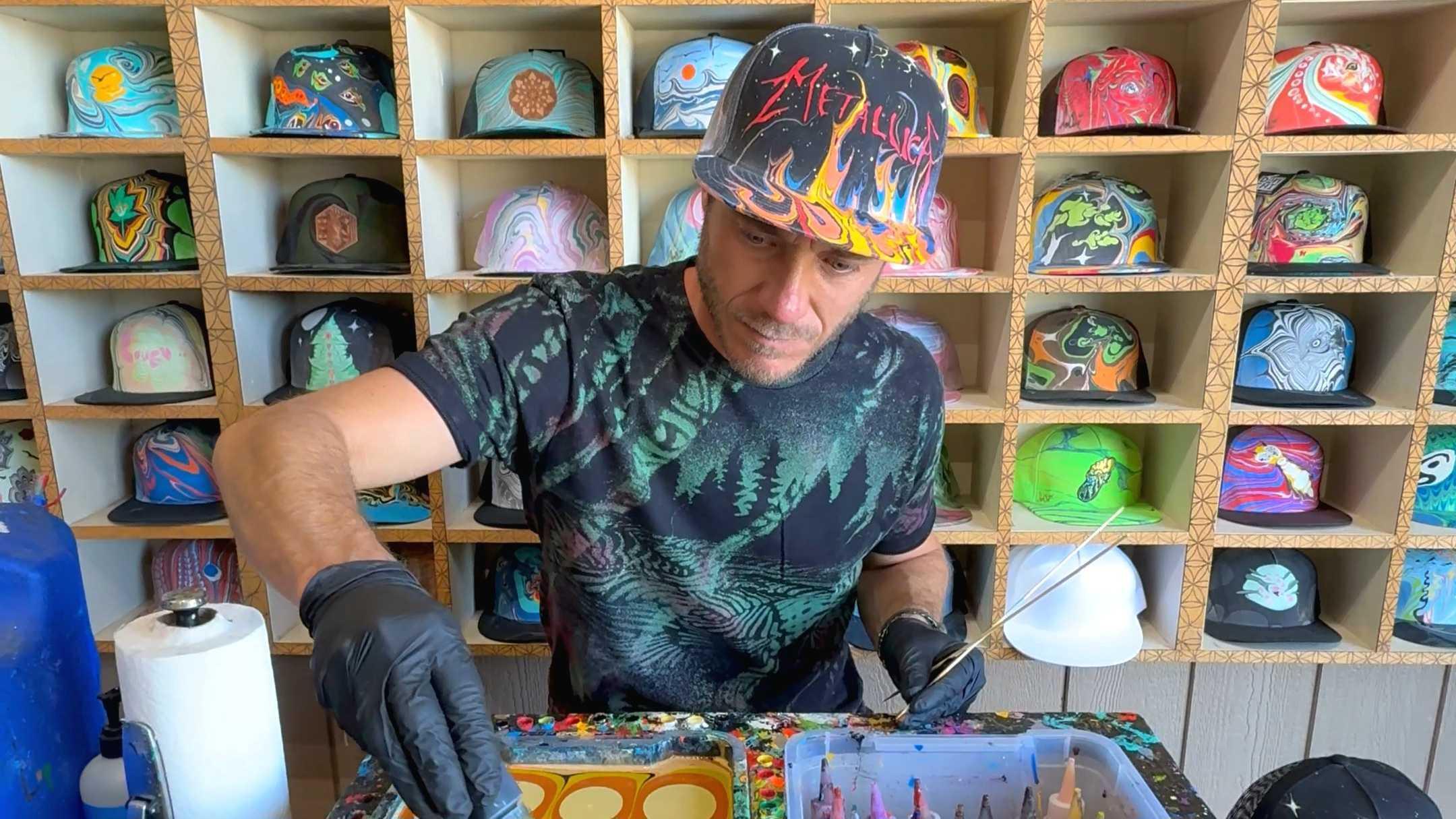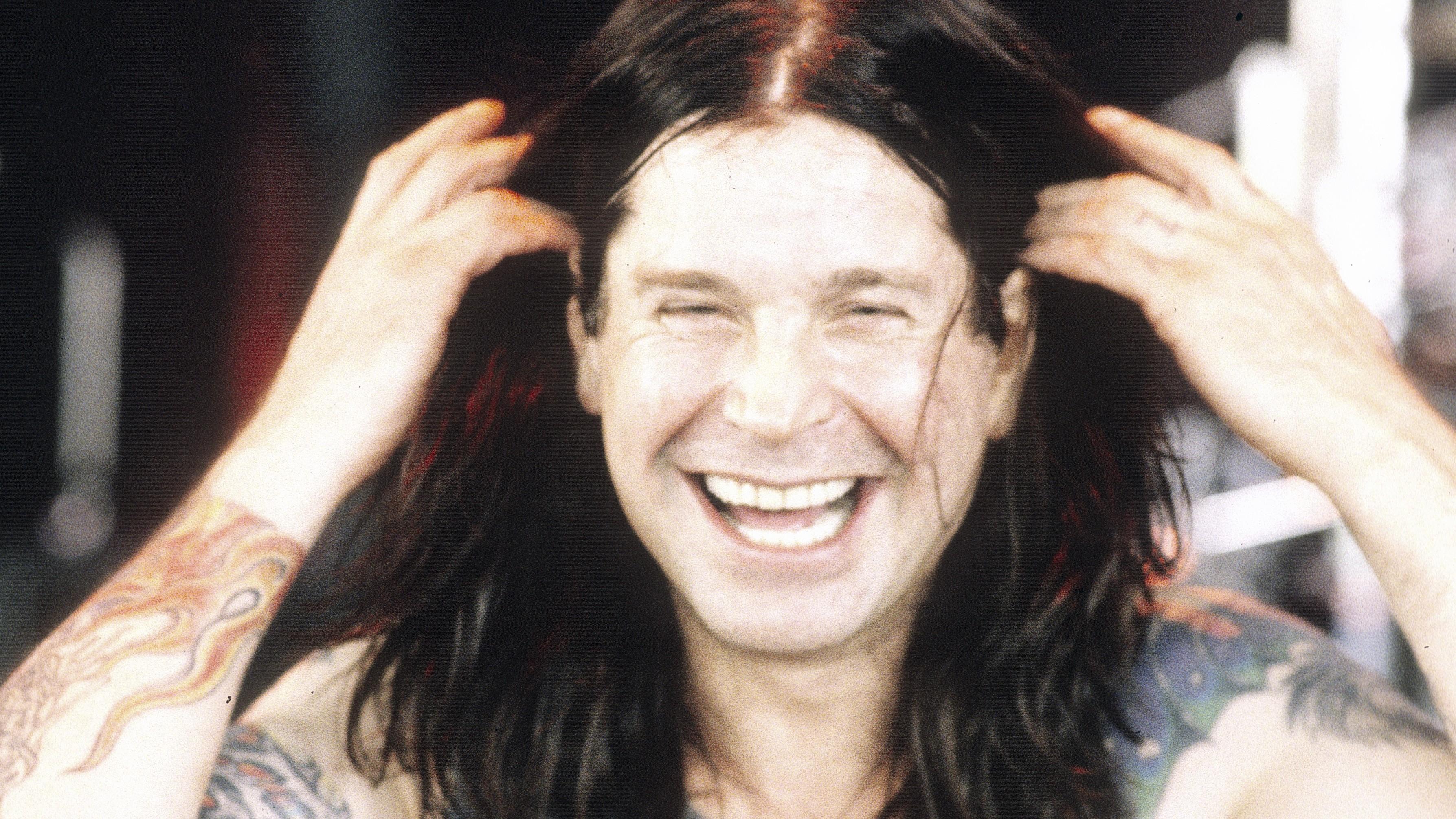
Looking Back on 2025
Some words and photos to look back on the year that was from So What! Editor Steffan Chirazi.
Nov 07, 2023
At the suggestion of Jamie McCathie from the 72 Seasons graphic design team (whom you’ll read about soon), photographer Lee Jeffries was brought in to do the band portraits included in the album art package. Intense and deeply sensitive, Lee’s work is all about an instant connection through his subject’s eyes and the consequent energy that moment generates. His portraits, showing each band member in open, unfiltered, and vulnerable states, have taken on a following of their own. Such is the raw honesty in their depictions; every inch of their years lived, seen without compromise. His photographs of the band on the M72 World Tour continue this theme. He has explored concert photography with a deep sense of intimacy and love.
Lee came to photography late, not picking up a camera until 2005, when he found himself making an abrupt about-turn from a career as an accountant in Manchester. When you speak with him, it is abundantly clear that photography is not a game – or even necessarily a profession – for him. It is a vocation, a calling which is almost beyond his control. Lee’s fervor verges on daunting, yet when he connects with you, he brings an extremely rare, unfiltered level of communication.
The photographer’s latest publication, Portraits: The Book, shared its subject matter with Portraits: The Exhibition earlier this year in Milan at the Museo Diocesano. Not only did the collection showcase Lee’s closeness and empathy with his subjects, but it served as the next chapter in his love affair with Italy.
What follows are excerpts from my conversation with Lee, a few unpasteurized observations on life, work, and self, shared in his unflinching Northern brogue.
Photo Credit: Lee Jeffries
EARLY TRAUMA
When I was eight, my parents divorced, and looking back now at 52, it seriously fucked me up. Dad would have me Saturdays; Mum would have me all week. When I went with my dad, I’d cry for my mother. When I came back from my dad’s, I cried for my dad. I still have this recurring dream where they get back together again, and everything’s okay. It’s made it hard for me to have a relationship and actually open myself up to a relationship. It’s one of the reasons why I have a particular propensity to feel lonely, and that loneliness is what drives me onto the street in the hope of connecting with strangers.
THE FIRST FORAY INTO PHOTOGRAPHY
In 2005, I was in London to run the marathon, and before the race, I went out onto the street to try my hand at street photography. It was something I’d never thought of [before]. It was just something that I thought I’d give a go. I had a Canon 5D in those days and a big 200 mm lens. I was just trying to shoot anything I saw. I saw this young homeless girl, and she’s huddled in a corner in a shop doorway surrounded by Chinese [food cartons]. Not knowing anything about homeless people and not knowing anything about the situation I was getting myself into, I started to shoot frames of her from across the street. She looked up and fucking kicked off big time. She went ballistic, shouting, screaming – remember, this was the first time I’d tried street photography. Everybody was looking at me, and I was thinking, “What the hell do I do here?” I had two choices: I either went over and started to talk to her, or I just did a runner. I chose the first option and went over to her, out of embarrassment, I guess. I sat down and listened to her story. It was the first time in my life that I’d ever actually listened to anybody else. For 30 years, it was all about me. It was all about my career as an accountant, just doing things to progress and get up the corporate ladder. That was the first time I’d shot a homeless person, and it was the first time that I’d experienced someone else’s pain.
WINDOWS TO THE SOUL?
When I’m walking on the streets… I’m looking into these people’s eyes, and I’m seeing a reflection of my own loneliness. Then, that provokes a moment; I like to call it a “moment of instant recognition.” That’s how I kind of describe it. My photographs are always about trying to get back to that moment. This moment of instant recognition is incredibly important in my process as it’s the channel that allows me to approach somebody… a stranger… because I know they can feel some emotion in me.
ROME
It’s a bit of a long story, but more accurately, it’s more like a story most of us are not actually prepared to tell. Most of what I do is based in the USA, and the real reason for that lies in a relationship. The person I met lived in the US, and the biggest thing to recount was that her mother, a devout Catholic, was diagnosed with cancer. Out of love, I ended up going to Rome to get her mother a Rosary blessed in the Vatican and bring it back to her before she died. My feelings around love and death amongst that experience in Rome have the most significant influence on my photographs now. Examine my work in this context, and you will perhaps reconsider what my portraits are actually expressing. They explode with religious references and vibrations of Rome – the atoms of the city itself find voice in my street portraiture authored on a pavement a world away. They are infused with a compassion for others that I never knew I had. Experiencing Rome was the first time I’d experienced the vibe of a city and the sense of humanity and spirituality in this particular city. It was such a beautiful experience.
I shot the woman with the praying hands there, and it became my signature photograph. The significance of this portrait underpins everything I’ve done creatively since. When I produce these images, they become my family. I sit… in tears, processing them. I put classical music on and become totally absorbed in the moment. Then, when I’ve wept and mourned over the relationship, I end up with a piece that truly moves me. The image becomes my last act of saying goodbye.
It was the exact same process with the Metallica shots. I adore those images, and I connected in such a beautiful way with all the band members. These photographs are as much mine as they are theirs. When I shoot a strong image, and it’s compositionally beautiful and everything, I can’t actually say how I’ve done it. I look up and just think, “Is someone actually telling me to do this?” Technically, I would consider myself the least proficient if you put me in a room with photographers, but emotionally, I think I’m the most connected.
Photo Credit: Lee Jeffries
NO LIGHTING, JUST A BOUNCE CARD
The bounce card was something that I basically had to use in Manchester. The lighting is gray, and it just drops from the clouds. So, you have to bounce it back up. And when I started to use it, I really liked the catch lights that it puts in the bottom of the eyes. It really illuminates the face, so I’ve just carried on using it forever.
THE WORK BEHIND THE FRAME
The images are processed. You know, they’re not coming out of the camera that way. I tend to underexpose all my images. You can’t put shadow into light, but you can put light into shadow. So, I underexpose the images, and then basically, what I’ll do is I’ll add light in specific areas. So, I work by dodging and burning to create atmosphere. A lot of photographers take the view that they’ll bring the image into Lightroom, start messing around with sliders, and think that a global slide is going to be the savior for everything… and it’s not!
I have to work on a micro level. It’s almost like I’m painting with light. That’s part of the process I go through, this mourning process. Painting with light and shadow is that soothing element which gives me the time to mourn over an image, to make it cinematic, to make it metaphysical. I always like to incorporate the metaphysical, that spirituality that I felt in Rome.
Light and shadow – because it’s all about light and shadow – and that sense of spirituality you feel when you walk through the streets of Rome are now incorporated in every single one of my images.
PORTRAITS: THE BOOK
There’s no light without darkness. The book is my journey. It’s their journey. But more than that, the book is about you, too. It’s about your life and the way you relate to things like humanity, spirituality, and even your childhood. We are born to love. To be loved. I’ve been looking for that love in the eyes of strangers now for, you know, 15 years. I’m still out there, searching…

Some words and photos to look back on the year that was from So What! Editor Steffan Chirazi.

Dominic Padua (aka Dom Chi) does many things very well, including the art of marbling. Steffan Chirazi visits his Sebastopol, CA, studio to learn more.

What you are diving into here is my personal journal with regards to the Back to the Beginning extravaganza. Much of it was written off-the-cuff, and the sheer magnitude of the event means that even now there are still pieces of “thought” swirling in the ether and making brain fall by the hour. These recollections, emotions, and observations are shared reflectively over three separate entries after the event and are split between an initial “post-event download” and then a more chronological reflection on our time in Birmingham…